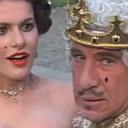Yahoo Answers is shutting down on May 4th, 2021 (Eastern Time) and beginning April 20th, 2021 (Eastern Time) the Yahoo Answers website will be in read-only mode. There will be no changes to other Yahoo properties or services, or your Yahoo account. You can find more information about the Yahoo Answers shutdown and how to download your data on this help page.
Trending News
Normandy, beach head...why no air support?
Can someone please tell me as this is truly baffling. Why on earth when they stormed the beaches of Normandy in those amphibious personnel carriers, that we did not blow the hell out of the beach head first with air support? Do you know how many american lives would have been saved? Of course, i am referring to "Saving Private Ryan" if in fact that is truly what happened.
2 minutes ago - 4 days left to answer
11 Answers
- 1 decade agoFavorite Answer
Air support was provided-it didn't work. I'm going off memory here, but I recall from Ambrose's book "D-Day" that B-17s were assigned to bomb the landing areas. However, cloud cover and other weather obscured the aim points, and the bombardiers, not wanting to risk hitting landing craft, held onto their sticks longer, and ended up releasing them far in land, where they did no good. Most of the naval bombardment had the same effect, actually-they didn't have great visibility of the target areas, were unable to adjust the fall of their shots, and ended up hitting more inland than anything else. Additionally, the German defenders had excellent fortifications to fight from, and didn't leave their bunkers and into trenches until the bombardment lifted.
As for why there was not support WHILE the troops were landing, it wasn't something they could do. Troops didn't have the radio communication capability they do now, and couldn't talk to fighters and attack aircraft to direct them in precise air strikes (and they couldn't carry a huge amount of ordnance anyway-they were mainly limited to light bombs and machine guns, which don't have the punch to have done much to the Atlantic Wall). It wasn't something that could be done with the technology available.
Additionally, the allies were deeply afraid of friendly fire, and put a kill box over the beaches-anything flying under a certain altitude over the landing beaches was assumed to be enemy, so fire away. This kept friendly aviators away from being able to support the landings.
Naval gunfire did attempt to landings with direct fire to support the troops, but it was not on a huge basis. It mainly came from the destroyers, which were closer to the beach than most other warships. When they could get visuals on targets, and positively ID them as enemies, they would provide fire (Ambrose notes on case where a destroyer was able to use an American tank as its target finder. The tank would fire at a target, and the destroyer would note the location of the tank's shot, and pour fire into that spot. It worked pretty well). The destroyers did all they could, and it certainly helped.
Short form, there simply wasn't the technology to be able to allow aircraft to provide precise targeting on the beach, so it wasn't done.
Source(s): D-Day by Stephen Ambrose. - 1 decade ago
They did the softening the night before. Dropping bombs out of WWII bombers was not a precision exercise:
The Normandy invasion began with overnight parachute and glider landings, massive air attacks, naval bombardments, early morning amphibious landings on five beaches codenamed Juno, Gold, Omaha, Utah, and Sword and during the evening the remaining elements of the parachute divisions landed.
There was air cover. Just cuz it ain't shown in a Hollywood script don't mean diddly!
Allied air operations also contributed significantly to the invasion, via close tactical support, interdiction of German lines of communication (preventing timely movement of supplies and reinforcements—particularly the critical Panzer units), and rendering the Luftwaffe ineffective in Normandy.[24] Although the impact upon armoured vehicles was less than expected, air activity intimidated these units and cut their supplies.
The below paste is from a US Army site, the stuff above was from wiki:
As dawn neared, bombers began to strike up and down the coast, flying the first of what would become, by the end of the day, more than 11,000 sorties against enemy batteries, headquarters, railroad junctions, and troop concentrations. The gliders Eisenhower had watched depart also arrived. Those of the British landed on target as did most of those from the U.S. 101st Airborne Division. Fewer than half of the gliders assigned to the U.S. 82d Airborne reached their assigned landing zones. The rest lodged in hedgerows, struck German obstructions, or floundered in the swollen marshes. By midmorning, 4,000 men of the 82d were still unaccounted for, along with 60 percent of the equipment they had carried.
- Anonymous5 years ago
There was massive Allied air support for the Normandy landings. Much of it was used to hit areas behind the beaches, destroying rail lines and preventing German reinforcements from reaching the beach area. To knock out each individual bunker and artillery emplacement would have taken months of reconnaissance, plotting, and bombing to ensure that most of the German fortifications would have been destroyed. Such operations would have surely tipped off the Germans on where the landings were to take place, eliminating any chance for surprise.
- How do you think about the answers? You can sign in to vote the answer.
- 1 decade ago
We already sent planes with paratroopers to block off roads leading to the beach so that Germany could not send reinforcements. Bombing would take warn the soldiers on the beach of an attack, and the entire point of choosing Normandy was because Hitler never suspected an attack there. plus, Britain had been being bombed regularly beforehand, so I'm sure the bomb supply they had on hand was not too impressive.
- Anonymous1 decade ago
um.... mostly it was naval bombardment. air support as you know it did not exist in this time period. it was scattered and not as pinpoint as one would need. Therefor naval artillery bombardment is better because they receive the co-ordinates and hit the target dead on or as close as could be expected. the only air support that could have been used would be strafing with bullets. Not very effective given the entrenched nature of the enemy.
Also Normandy was probably the greatest deception in the history of warfare. It took a lot of lies and silence to convince the Fuhrer that no attack would come from this area
- Andrew KLv 61 decade ago
I'm pretty sure there were huge amounts of Flak cannons on the top of the hill, this making any air attempt suicide. I'm pretty sure the idea of paratroopers was discussed before the beach landing, but the beach was filled with anti-air.
- RayLv 71 decade ago
I would suggest reading a book. There was a great deal of Fire Support but there were issues and a book (like D-Day by Ambrose) might bring that aspect of the war to light for you.
- 6 years ago
They had amassed the massive assault. Thousands of men on the ready. It was impossible to stop. Weather reports were 50/50 at best. Germans were watching.
As foul as the circumstances were, it's remarkable that it succeeded.
- D.B. CooperLv 71 decade ago
There was plenty of air support. Don't forget entire paratrooper divisions, like the 82nd and 101st, who were dropped behind enemy lines.
If the enemy has massive antiaircraft defenses, you don't want to risk your planes while a battleship bombardment is less risky with heavier firepower.








